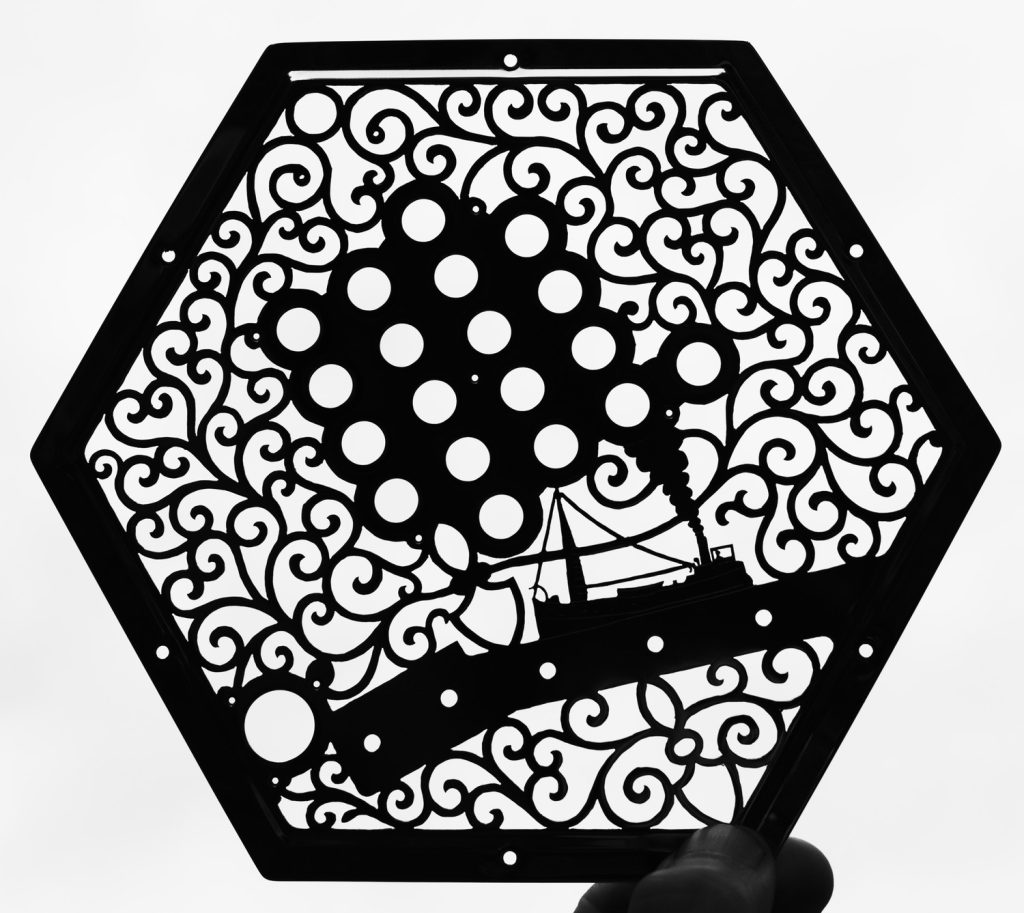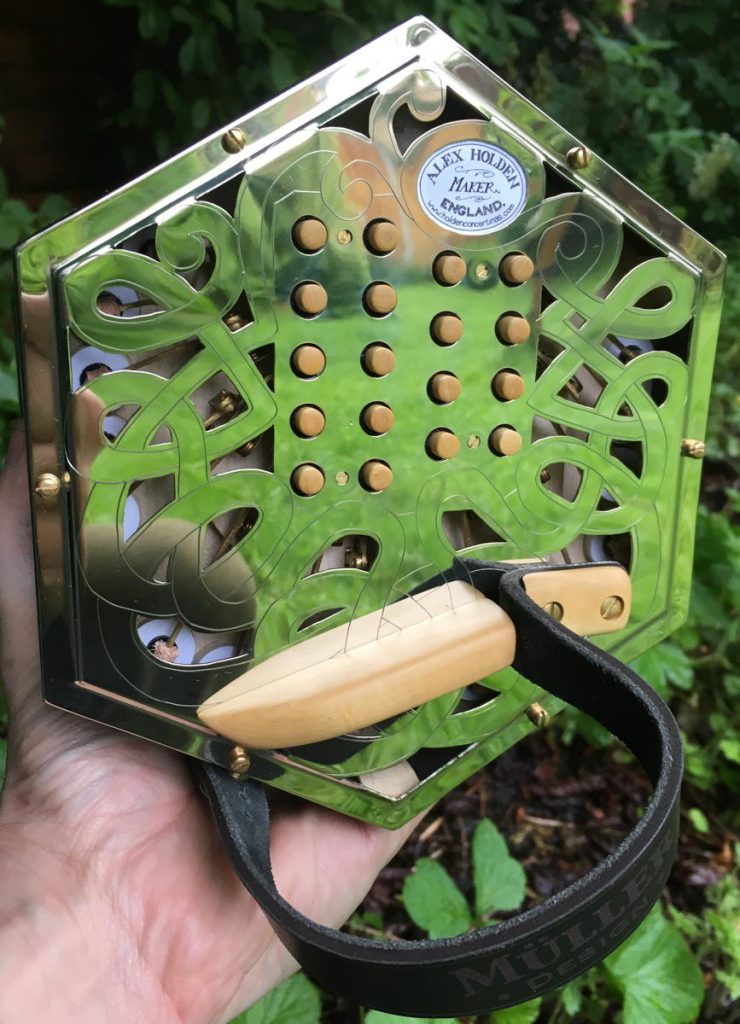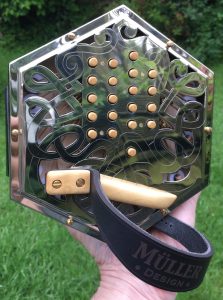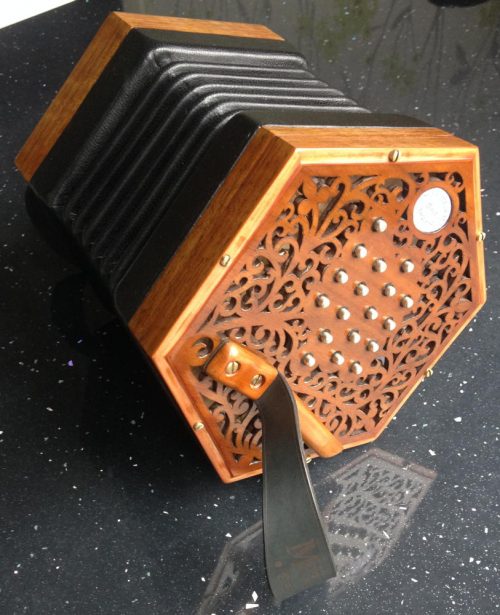No. 13: A 40 Button Müller English
My thirteenth concertina was a beautiful English concertina with Müller-style keyboard and hand rests/straps, plus some additional thumb-operated bass drone buttons.
Specification
- 40 buttons: 18 treble + two bass buttons on the left, and 19 treble + 1 bass button on the right. Also has an air button on the left.
- Six sides, 6 1/3″ (161mm) wide.
- 5.7mm diameter nickel-silver capped buttons with domed profile.
- 3mm button height and 3mm button travel (buttons stop flush with end plate).
- 2:1 action lever ratio giving 6mm pad lift.
- Three bass drones operated by 10.6mm diameter flat topped nickel-silver capped thumb buttons.
- Brass reed frames with long scale steel tongues, except for the bass reeds which are extra-long and have phosphor-bronze tongues.
- Brass sheet riveted action levers.
- Full-width flat nickel silver end plates with crimped edges.
- Extra-fine hand cut fretwork with custom decorative elements and hand engraving.
- Dark red button bushing cloth.
- Black bog-oak thick-veneered action box sides.
- Solid bog-oak hand and thumb rests.
- Seven fold black goatskin leather bellows, fully leather covered.
- Real gold tooling on the bellows ends.
- French polished external woodwork.
- Hand engraved silver decorative inlays on the hand rests.
- Sycamore reed pans with parallel chambers and multiple chamber depths.
- Tuned Equal Temperament, A=440Hz.
- Weight: 1600g
- Special hand made brown leather hexagonal hard case.
…



